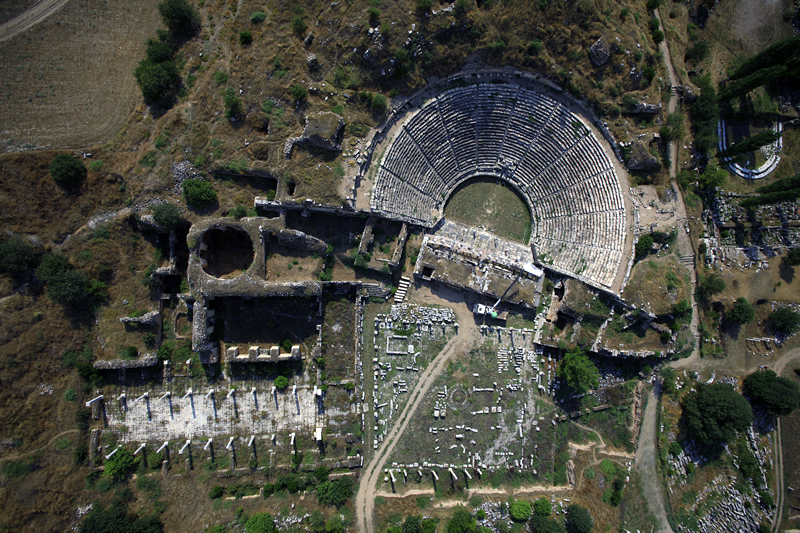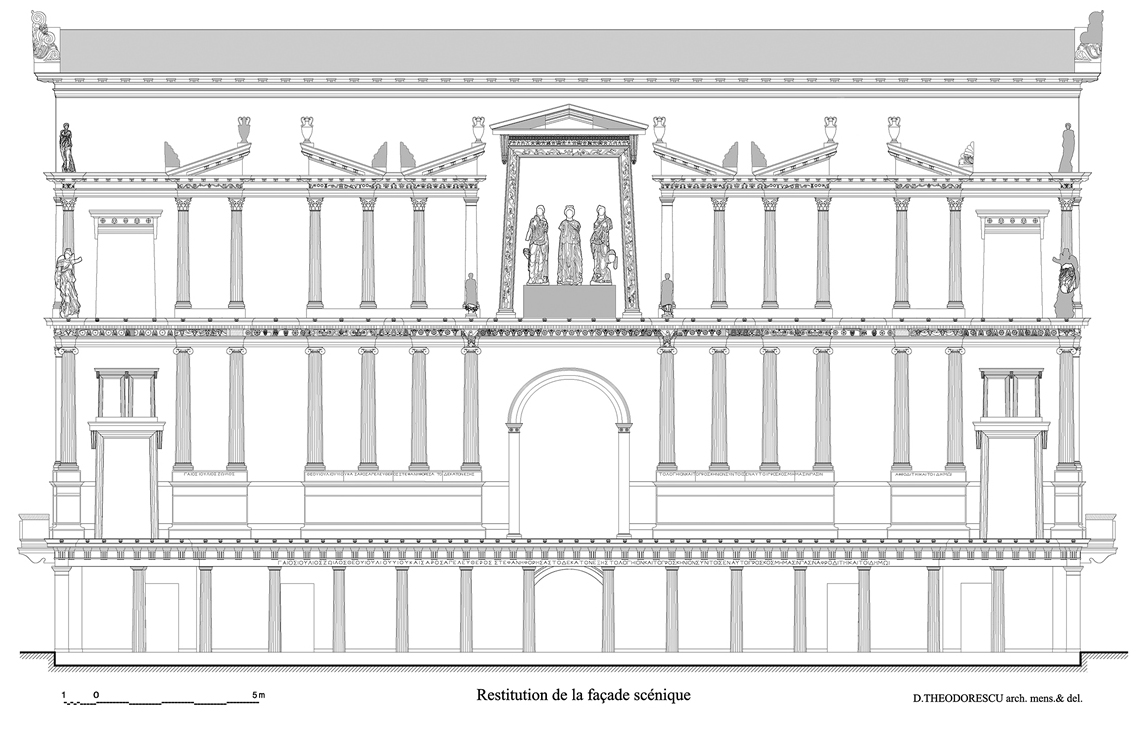Theatre
The Theatre was a central building and institution of the developed Greek city state. It was used for a wide range of dramatic and other kinds of entertainment, but it was also here that the demos, the people, met in assembly. The Aphrodisias theatre preserves its full twenty-seven tiers of seats below the walkway (diazōma) and a few rows of seats above it, as well as much of the stage architecture. It originally seated c. 7,000 persons.
The auditorium (cavea) was built against the prehistoric settlement hill (höyük) in the late hellenistic period, and an elaborate three-storeyed marble stage building was added by Zoilos before 28 BC. The architecture of this new facade is notable for its light, playful aedicular design and for its high-quality and highly varied ornament. The dedication of the stage building, inscribed in large letters on the Doric architrave of the stage and again in the second storey, records that ‘the stage building (skēnē) and the stage in front (proskēnion), as well as all the ornaments on it (proskosmēmata) ’ were paid for by Gaius Julius Zoilos, who is identified as a freed slave of Augustus, the first Roman emperor. A series of major statues was discovered fallen on the stage and in the orchestra. An Apollo, two Muses, portrait figures, and several Victories belonged to the stage building. Two statues of boxers stood on the ends of the retaining (analemma) walls for the auditorium.
In the first century AD, the auditorium was extended upwards on substructures and re-lined throughout with marble seating. On the north side, its great ashlar retaining wall continued to a much lower level, where it formed the back wall of part of the south stoa of the Urban Park. There was direct access to the Theatre from the stoa below by a large vaulted stairway through the retaining wall to the cavea above. In the second century AD, the orchestra level in the Theatre was lowered to form a safe arena-pit for gladiatorial and animal shows. Finally in the seventh century, a massive wall of re-used material was built along the line of the back of the stage building, blocking the entrances. This wall continued around the whole Theatre hill and turned it into a well-defended fortification, an early Byzantine kastro.
Finds:
Boxers
Archive Wall









